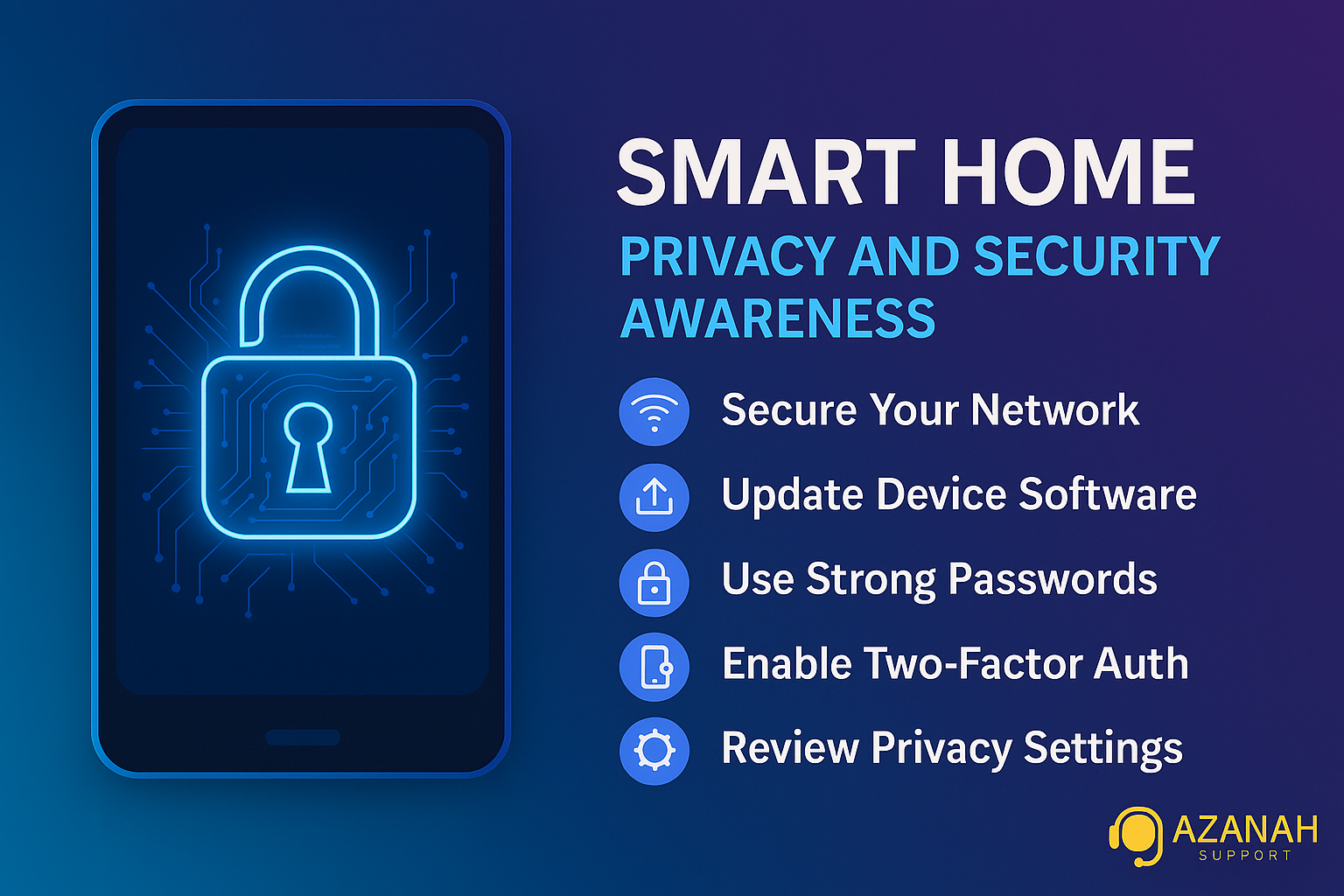
- Who’s collecting your data?
- Where is it stored?
- Can it be misused?
This article isn’t here to scare you off your smart home dreams — it’s here to help you stay informed. Let’s explore the most pressing privacy concerns that come with home automation — and how to keep your sanctuary safe.
1. Always-On Microphones
Most smart home devices are voice-activated. This means they constantly “listen” for a wake word (like “Hey Siri” or “OK Google”). While the intent is to improve user experience, the truth is:
- Devices may accidentally record conversations without your consent
- Some recordings are stored and reviewed by humans for “quality assurance”
- Hackers could potentially exploit microphone vulnerabilities
What You Can Do:
- Regularly review and delete voice history from your device settings
- Disable voice controls on unused devices
- Mute devices when not in use
2. Cameras with Access to Your Living Space
Indoor cameras, baby monitors, doorbells — they give peace of mind, but they’re also digital eyes inside your private spaces.
- Some smart cameras upload footage to the cloud for remote access — which, if unencrypted, could be intercepted
- Breaches on third-party servers can expose personal footage
- Insecure settings may allow unauthorized access (remember those horror stories of strangers speaking through baby monitors?)
What You Can Do:
- Change default passwords immediately
- Enable two-factor authentication
- Choose cameras that support local storage with encrypted backups
3. Data Collection That’s Way Too Personal
Your smart devices know when you’re home, how many steps you’ve taken, what you’re watching, and even how often you microwave leftovers at 11 p.m. This data — while useful for personalization — can also be:
- Sold to advertisers or data brokers
- Used to build detailed profiles of your lifestyle
- Vulnerable to misuse if stored without strict protections
What You Can Do:
- Read the privacy policies (yes, really!)
- Use guest networks for smart devices
- Adjust permissions and data-sharing options in your device apps
4. Insecure Wi-Fi Networks
Your smart devices all connect to your home network. If your router isn’t properly secured, it becomes the weak link in your digital fortress.
- An attacker gaining access to your Wi-Fi could control your smart devices
- They may snoop on your activity or create “botnets” for cyberattacks
What You Can Do:
- Use strong, unique Wi-Fi passwords
- Update your router’s firmware regularly
- Create a separate network just for your smart devices
5. Lack of Standardized Security Across Brands
Not all smart devices are created equal. While major brands like Apple and Google invest heavily in security, some lesser-known or budget-friendly devices may:
- Use outdated software
- Lack encryption
- Skip critical security patches
What You Can Do:
- Stick to trusted brands with transparent privacy policies
- Register your products so you get firmware updates
- Avoid impulse buys — research before adding to cart
Final Thoughts: Smart ≠ Careless
Home automation is a beautiful thing — it simplifies, enhances, and even protects your daily life. But smart doesn’t mean careless. Being aware of the privacy risks isn’t paranoia — it’s just good digital hygiene.
Keep asking questions. Stay updated. Choose devices and service providers that respect your privacy and offer transparency. That’s how you build a truly smart home — one that’s intelligent and secure.
✅ Bonus Tip
If you ever feel overwhelmed navigating your smart home’s security settings — you're not alone. Our Services are built to walk you through all these steps with real humans (not just chatbots) who help make technology feel more human again.
© 2023 All rights reserved.
DMCA PROTECTED
DMCA PROTECTED
 .
.